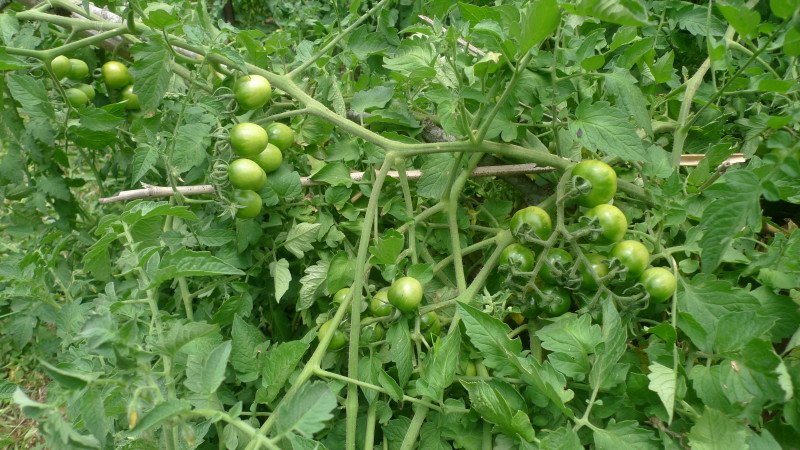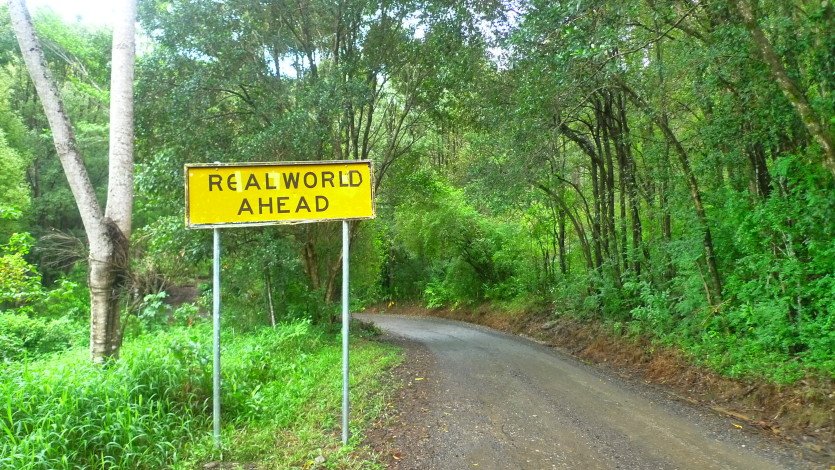[PS. If you are having difficulty reading the extended post on your mobile device, please click on “view desktop site” and it should load. Can’t seem to fix this, other posts seem to work on mobiles though]
So the house is finally sold and my boyfriend, Dan, has decided to move closer to Sydney till the end of the year, before his mom looks at buying another property in the Northern Rivers. Sorry for the blurry photo – it was a screen capture from realestate.com.au, the lovely photo was taken by Elders Real Estate. For now, my journey of rainforest/remote living will be put on hold. Fingers crossed that he will move to Sydney for a short stint so that I can do more self sufficiency courses with Milkwood, since there are none in Byron Bay for the rest of the year. Of late, I’ve been extremely keen on fermentation, in particular – water kefir, but I will talk about that another time.
In these last 3 and a half plus years of jetting between Singapore and the subtropical Byron Hinterland, specifically Upper Coopers Creek, I’ve learned a lot about simple living and about the beauty of living with the seasons of nature, something that I didn’t pay attention to much when living in Perth for 7 years, and even less so in Singapore. It’s an experience I love and treasure greatly, being in sync with nature is beneficial to our health and well being, and being a gardener reminds me of this.
Living in the rainforest and off the land is often romanticised but it can be costly and involve more effort than what many people think. Selling Houses Australia – one of my favourite Australian television programmes, shared a surprising statistic about how 50% of city dwellers who buy into country towns change their minds and move back. It’s certainly not for everyone.
Here is a list of considerations when living remotely:
1. Water, gas and energy sufficiency
Fortunately, Dan had a creek running through the property, so he had access to water, otherwise he would have had to rely solely on falling rain. He had installed a 22,500 litre water tank so he only needed to pump water once a month or so, instead of pumping water every time he needed it, like what the previous owners used to do. A family friend lived on the property too, so it’s not like Dan uses so much water by himself.
We used to brush our teeth and drink the creek water after boiling, but Dan decided against it after contracting three types of parasites and experiencing drastic weight loss. He decided to buy filtered water each time he went to town and would bring two 25-litre bottles with him, it would cost $8 for around 50 litres.
Energy-wise, we were still on the grid, but there are plans to get solar in our future residence, we had solar water heating though. As for gas, we ordered cylinders at around A$110 each time. We knew how much gas we have by looking at the condensation on the cylinder in the morning, an alternative was to install a gauge but there was no real need to.
2. It can be high maintenance living remotely
There are many outgoing costs living on a property like Moondance, which spans around 5 acres. There are lots of trees which mulch themselves, but there is still a lot of grass to mow, and because it is a little hilly, it’s probably not so conducive to have livestock to keep the grass down, so it is necessary to get on a ride-on-mower every 3-4 weeks. The alternative here is to grow ground cover and have a no-mow lawn, and cut the lawn using a scythe, where possible.
Tree branches and palm fronds can be found lying around the compound, and it is everyone’s duty to exercise tidiness and move fallen tree parts aside, we have demarcated areas for this. We don’t have a woodchipper so we do burn-offs, which is a common practice in the countryside in the cooler months. The ideal situation is to have a woodchipper in future, and then use the output as mulch.
Living in the rainforest meant high humidity and of course – lots of rain. Black mould had a presence in the house and began showing up on the ceiling and bathroom. Even wooden items starting exhibiting black spots. I had to sandpaper these items and oil them.
3. Internet and phone connectivity
Ease of connectivity can also be a challenge. Dan was told by Telstra that he had to wait indefinitely for an available internet port in his remote region, so he had to sign up for satellite internet in the meantime, which costs A$70 each month, and gives him only 3GB peak time and 12GB off-peak usage. On one occasion, he had to pay A$250 because he exceeded the permitted quota by a fair bit.
The only way to reach him on the phone was by ringing the landline, as there is no mobile phone tower in that area, which we were rather happy about. Some people would prefer otherwise of course, because there’s a chance of getting lost in the area, and this can lead to a measure of inconvenience. There’s also the option of a satellite phone, our former neighbour has one.
4. Have a big mailbox
If you have a small mailbox, you might have to make trips to the nearest post office to get your small parcels, which isn’t so near. Ours was an upcycled beer keg, not uncommon in rural areas, there’s an artisan who makes animal-themed mailboxes out of beer kegs e.g. peacocks, lady bugs, bees. Unlike city postal services, the postie doesn’t go to your front door to drop off your parcels, as some driveways here can be quite long, and homes can be quite far in. They usually drop off a parcel collection slip in the mailbox, and we have to drive around 20 minutes to the nearest post office to get to our parcels if they are medium to large sized.
5. Consume less, live responsibly
The garbage man doesn’t pick up your trash here, so you have to take your trash and recyclables to the garbage tip, usually at a cost of A$10-12 per trip for us. Your car is weighed before and after you drop off your rubbish, and you are charged accordingly. There’s a tip shop on the premises, which sells discarded items which can still be used. We have found great books, including ones by Carlos Castaneda and Alan Watts for 50c a piece.
We mostly cooked vegetarian meals at home and we had an abundance of fruit and vegetable peelings which went to our compost bin. We don’t fancy packaging much, so we tried to cut down by bringing our own bottles and plastic containers to shops like The Source, a bulk food health store which allows you buy only what you need. We still have recyclables from time to time, so Dan would take it in with the rubbish, usually once in two months, which sounds gross I know but hey, it works.
6. Grow your own, buy local, and get to know your farmer
Having a veggie garden can be an expensive hobby, as I realised, but a very fulfilling one. It gets cheaper after the veggie beds are properly established. The soil was rock hard when I first started, as a result of years of neglect, after Dan got too busy to spend time in the garden. Most money was spent on fertilisers and soil improvers, I also bought some seedlings along the way, and splashed out on seeds. I prefer growing from seed, and save my own, which saves me money too.
We often had excess fruit, veg and herbs, which we sometimes gave away but it mostly became compost – some on the ground, some in our dedicated compost bin. The ideal situation would be to preserve the excess, which is something that I would like to do in future. We couldn’t grow everything that we love eating – dates, apples, pears, avocadoes etc, so we would buy them locally at makeshift produce stalls outside people’s homes or at farmer’s markets.
There are farmers’ markets practically everyday in this region, and it’s easy to get affordable, fresh produce even from your generous neighbour. We believe in buying organic or spray-free but we sometimes get conventionally-grown vegetables when we are on a tight budget for the week. Buying local means that food is usually fresher and it has a smaller carbon footprint. Better yet, get to know who grows it; we go to the same old people and places to buy our fresh produce, and we know that it’s safely grown.
7. Petrol bills and car maintenance can be hefty
Because Dan drives a Honda CRV, and had to drive winding dirt roads for a relatively long distance, he spent a fair bit of money on petrol. The wear and tear on his tyres were so bad that he had to change them every year, costing around $400 per year, on top of his usual vehicle servicing sessions. His car had a few problems in recent years, and had to replace his engine and suspension. Now that the drives will no longer be as demanding, he can downsize to a more economical and eco car.
8. The rainforest has a lot of beauty, but danger too
And lastly, living in the rainforest is tranquil and beautiful but comes with an element of danger and/or pain – poisonous spiders, snakes, leeches, ticks, bull/jumping ants, mozzies, sandflies… Dan once saw a pair of platypus, but they are only poisonous if you handle them. As for bushfires, it’s rather damp in these parts so we didn’t feel like we were at risk. But of course, the “downsides” shouldn’t be the focal point.
Gardening in summer, especially later in the day meant a lot of mozzies and sandflies, so I had to swat them while gardening. Bites from sandflies would last for days, but they weren’t as itchy as jumping ants, eventually I wore gumboots each time I went outside as precaution against the ants. For the times I was bitten, I would wash the bite area with calendula infusion (I would also freeze them for later use), and then applied aloe vera gel to it – both were obtained from the garden. These are two of my favourite medicinal plants.
I hate leeches because I find them creepy, I’ve never been bitten because I would detect them on my skin before they could land a bite. There’s a weird, cold sensation on the skin, and they can be found in damp parts of the garden. Dan has been bitten and he said it leaves a bloody mess and itches for days.
As for ticks, they are truly annoying. In the warmer months, I would find them on my scalp and neck, and Dan would find them all over his body. We would do a tick check at the end of the day, when left undetected, we would feel out of sorts for days, and when detected, we would have to tweeze them off the body.
We had a pair of resident pythons, who are harmless, but we also found a poisonous black snake in the toilet recently. It slithered under the door, and we had to board up the gaps. We usually have door snakes but Dan threw them out as part of the decluttering process.
It was incredibly sad for me to leave the veggie bed I had worked on for years, but the consolation is the endeavour to build a much larger veggie garden, maybe even a market garden, in my forever home.
I hope you found these points useful, and go in with an open mind as you move towards a self-sufficient lifestyle. It’s more work but it is certainly more rewarding for the soul. So it’s goodbye to the hinterland for now, and back to urban living for the rest of the year, but I will return and continue my self-sufficient journey very soon!


















No Comments